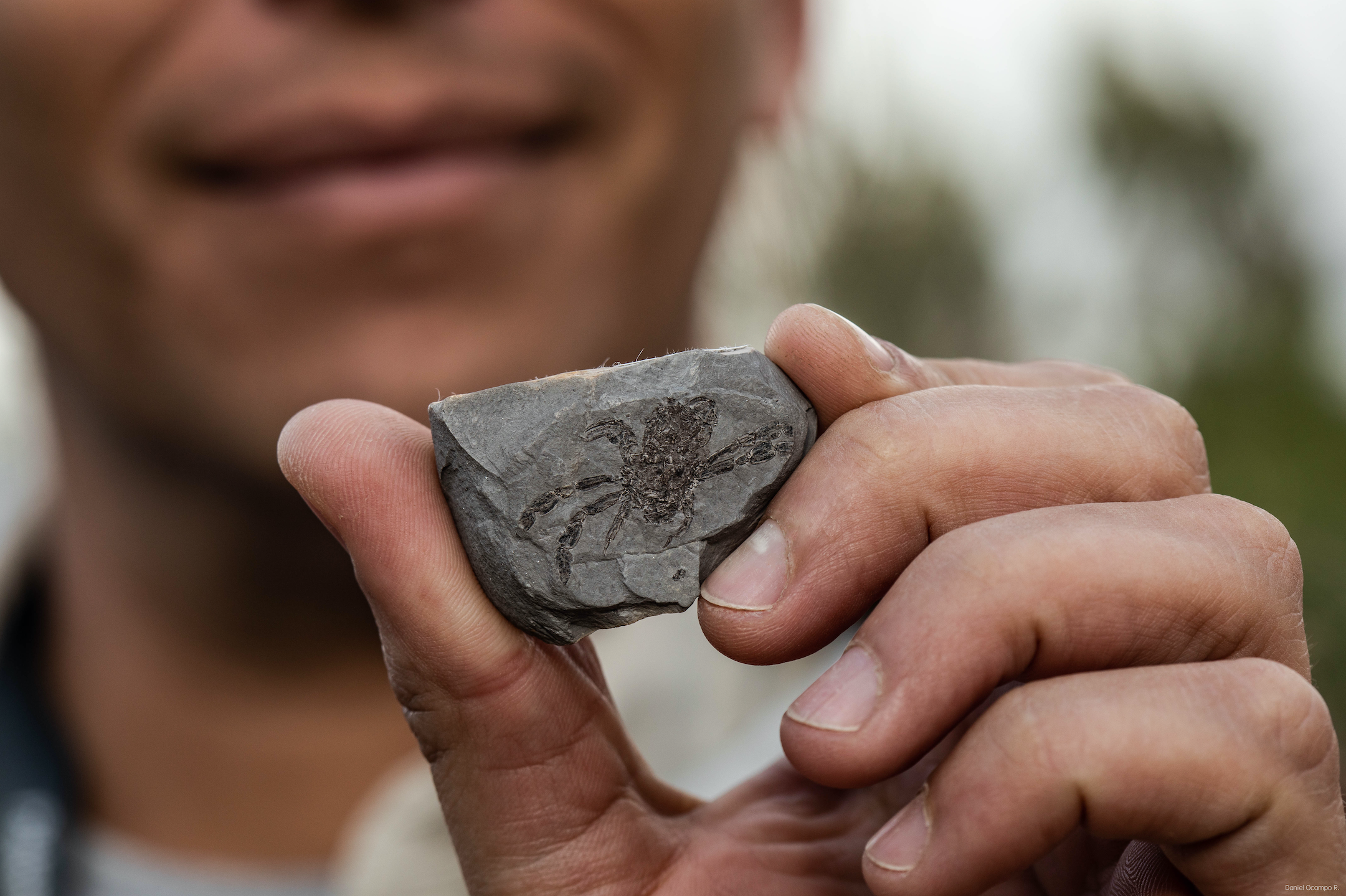90-Million-Year-Old 'Chimera' Crab Was An Animal Mashup
What has the shell of a lobster, the mouth of a shrimp, and a pair of googly eyes?
It's Callichimaera perplexa, a thoroughly weird Cretaceous species named after the chimeric combination of features that make it such a unique find. This extinct crab species, which lived alongside dinosaurs some 90 million years ago, was unveiled in a paper published Wednesday in Science Advances.
Led by Javier Luque, a postdoctoral paleontologist at the University of Alberta and at Yale University, the authors describe dozens of chimera crab specimens found in Colombia and the US.
These animals were extremely small, measuring about the width of a quarter from leg to leg, with a carapace no bigger than a few rice grains. "It is exciting, because they were preserved in such good detail despite the small size," Luque told Motherboard in a phone call.
 Fossilized C. perplexa. Image: Daniel Ocampo R., Vencejo Films
Fossilized C. perplexa. Image: Daniel Ocampo R., Vencejo FilmsThe exquisite condition of the crabs enabled the team to reconstruct the bizarre anatomy of C. perplexa, which Luque calls the "platypus of the crab world."
"We have an idea of what a typical crab looks like-and these new fossils break all those rules," Luque said in a statement.
The crab had bulging larval eyes, which is one of many indications that the species retained baby features even after it reached adulthood. This is a phenomenon known as pedomorphosis, or heterochronic development, that has been observed in many animals, such as the Mexican axolotl.
Though these huge peepers had no sockets or discernible protective layers, the crab probably had functional vision that helped it hunt prey, avoid predators, and recognize members of the same species.
"We're trying to unravel the visual eye type in this chimera crab," Luque said. "So far, what we think is that this animal swam freely in the water column. Maybe it was able to migrate during the day and be an active predator in dim conditions. But that is something that we are hoping to explain in more detail as we go."
As well as being a delight to behold, the chimera crab's mismatched adaptations shed light on the broader evolutionary history of crabs and shows that there are paleontological treasures in under-explored equatorial regions.
"We used to know very little about the fossil record in the tropics," Luque said. "We are starting to get a critical mass of researchers working in tropical low-latitude areas, yet there is so much to be discovered. This is just one example of a previously unknown group and there might be so many other organisms just waiting for us."
Get six of our favorite Motherboard stories every dayby signing up for our newsletter.